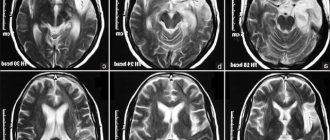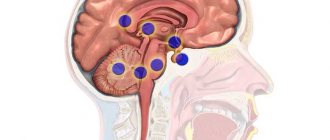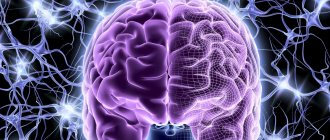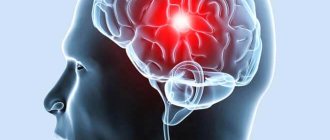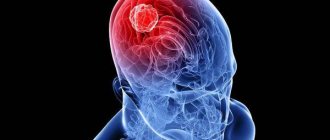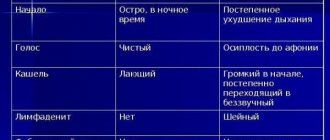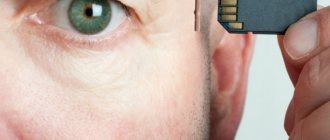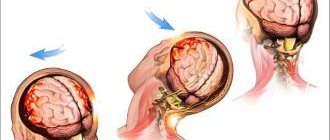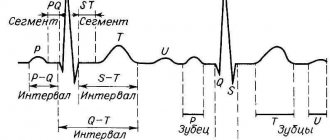Basic treatment methods
Treatment of the vessels of the head and neck is usually carried out when there are symptoms of other diseases: hypertension, atherosclerosis. A healthy lifestyle can reduce the risks associated with these dysfunctions. Physical activity reduces the likelihood of strokes by 25%, and proper nutrition and smoking cessation reduces the likelihood of strokes by another 25%. You need to restore your health from small steps: walk more, eat right, limit alcohol and stop smoking.
The main way of prevention in medicine is medication. If high blood pressure is detected, antihypertensive drugs are prescribed. Even if there are complaints about the cervical spine, pills are used to improve blood circulation or muscle relaxants to reduce spasms.
Treatment of blood vessels in the head and neck with folk remedies relies on the use of garlic for cleansing and mustard compresses. Vascular spasm mediated by muscle imbalances and stressful situations is not affected.
At home, diaphragmatic breathing is suitable for relieving the effects of stress - with the ribs expanding to the sides as you inhale. In this case, the shoulders should not rise. This type of breathing relieves the muscles and fascia of the neck and relaxes the blood vessels. To correct muscle imbalance, it is better to contact osteopaths, but avoid manipulation of the vertebrae.
What do we have to do
First of all, actions should be aimed at stopping the development of the disease. It is almost impossible to completely cure osteochondrosis of the cervical spine, but long-term remission can be created. To improve blood supply to the brain, a complex effect is used, which includes the use of:
- medicines;
- physiotherapy;
- special gymnastics.
If you combine the available methods correctly, you can quickly achieve results. A qualified specialist should be involved in drawing up a method for getting rid of cervical osteochondrosis and its manifestations. Serious drugs are used that require examination to identify possible contraindications.
Treatment can be carried out by a therapist or neurologist. They are the ones who prescribe diagnostic procedures, various medications, physiotherapy and special gymnastics. An individual set of therapy is selected for each person. The main task at the very beginning is to dilate the blood vessels, thereby improving blood supply.
For this, various vasodilators and even folk remedies are used. They give the fastest effect. After the first use, you can count on the disappearance of headaches and other pronounced symptoms. At the same time, non-drug treatment methods are used, which help to quickly get rid of the lack of cerebral blood supply.
As a complement to medicinal and non-medicinal methods of improving cerebral circulation in cervical osteochondrosis, proper nutrition can be used. It implies the elimination of bad habits and the rejection of low-quality food. The transition should be smooth, especially with active use of medications.
Firstly, a person must start eating as often as possible, but in small portions. Can switch to small meals 4-5 times a day. Secondly, you need to give up alcohol and smoking. Ultimately, they come to complete abstinence from bad habits. Avoid sweets and fried foods. Proper nutrition includes eating:
- vitamins;
- fiber (solid dietary fiber from vegetables and fruits);
- sufficient amount of fluid (at least 2 liters per day).
A doctor can create a diet. It is necessary to take into account other existing diseases when compiling it. If there are no concomitant diseases, then you can safely switch to frequent meals. Portions should be smaller than usual. In this way, it is possible to reduce the load on the gastrointestinal tract, while maintaining the amount of nutrients that come from food.
During oxygen starvation, it is important that a sufficient amount of iron enters the body. To quickly get rid of the disease, it is necessary to correctly build a daily routine. People suffering from osteochondrosis are required to rest properly. Sleep should be full at least 8 hours a day. It is advisable to use a special pillow and orthopedic mattress so as not to experience discomfort from osteochondrosis.
Causes of cerebrovascular accidents
Cerebral circulation disorders are provoked by the following factors:
- One of the main reasons is atherosclerosis. In the body, due to poor nutrition and slow metabolism, cholesterol plaques are deposited on the walls of blood vessels.
- Stressful situations.
- Arterial hypertension.
- Violation of blood rheology.
- Infectious diseases accompanied by vasculitis, which leads to increased vascular permeability or blockage.
- Intoxications of various types: household and industrial.
- Skull injuries of varying severity.
- Scoliosis and osteochondrosis, mainly of the cervical spine, as well as anomalies of its development.
- A disorder in the functioning of the body's main systems causes chronic fatigue syndrome.
- Increased chronic stress and uncomfortable postures.
Types of cerebral circulatory disorders and its symptoms
There are 2 types of cerebrovascular accidents:
Type one is an acute disorder. During it, two types of strokes occur - hemorrhagic and ischemic.
Hemorrhagic stroke is caused by hemorrhage that occurs when a blood vessel ruptures. A provocative factor may be a rupture of the vascular wall due to its thinning, a change in the composition of the blood, or the penetration of blood elements through the vascular wall due to its pathology.
Ischemic strokes are:
- transient type, the vessel is not completely blocked;
- thrombosis - the lumen of the vessel is blocked by a thrombus, which leads to hypoxia of the brain area, up to necrosis.
If signs of poor cerebral circulation have developed over the years, then the process can be diagnosed as chronic. The changes progressed and became irreversible. This condition is diagnosed as encephalopathy or chronic cerebral circulatory failure.
Symptoms of poor blood circulation to the brain
All types of cerebrovascular accidents have their own clinical characteristics. The diagnosis is made based on complaints, characteristic symptoms and examination results.
Symptoms may include the following:
If the patient is in acute condition, first aid must be provided within a few minutes after the onset of the disease. You can only do indirect cardiac massage in combination with artificial respiration on your own. But even when a medical resuscitation team is called, death occurs in 30% of victims. With hemorrhagic stroke, mortality increases to 45%.
Therapy for cerebrovascular accidents
In acute cases, it is possible to treat the consequences of poor blood circulation in the brain only in intensive care units of a hospital. Therapy is aimed at maintaining vital functions.
Respiratory functions are restored, efforts are made to reduce intracranial hypertension and normalize blood pressure.
If thrombosis affects the limbs, then elimination of the blood clot is carried out simultaneously with the treatment of strokes.
The recovery period takes a long time, and if the symptoms of thrombosis of the lower extremities are neglected, a gangrenous process may begin. Therapeutic measures eliminate the cause that caused the cerebral circulation disorder and gradually restore lost functions.
What to do if poor blood circulation is diagnosed in a chronic form.
Prescribed drugs that improve blood flow, thin the blood, and normalize blood pressure. Normalization of cholesterol in the blood is achieved by changing the diet and prescribing medications that help dissolve lipids.
Preventive measures for vascular disorders of the brain
To prevent the occurrence of strokes and a decrease in life skills, a significant deterioration in the quality of life, it is necessary:
- eat rationally and properly, avoid obesity;
- to refuse from bad habits;
- control blood pressure;
- move actively, taking into account your health status and your own capabilities;
- monitor blood sugar levels and the content of lipoproteins and triglycerides.
It is imperative to treat diseases associated with damage to the cardiovascular system.
Mental training prevents the progression of degradation: reading books, counting activities, memory training.
It must be taken into account that pathological processes caused by impaired blood supply to the brain are, in most cases, irreversible
In order not to treat the consequences of poor blood supply, you need to pay attention to disease prevention
Establishing a diagnosis
When the first suspicious symptoms appear, for example, frequent headaches, vertigo, hearing and vision disorders, you should contact a neurologist, reflexologist or vertebrologist.
Currently, the following instrumental methods are used to identify cerebral circulation disorders against the background of cervical osteochondrosis:
- Doppler ultrasound (Doppler ultrasound) of the neck vessels is used to assess the degree of vasoconstriction, as well as measure the speed of blood flow.
- Transcranial Doppler ultrasound is an ultrasound examination of the blood supply to the brain, which allows one to assess blood flow through intracranial vessels. This technique allows you to identify a violation of venous outflow, as well as arterial outflow, to identify spasm or local dilatation of blood vessels (aneurysm).
- X-rays of the spine are used to identify bone growths, as well as areas where the height of the vertebrae is reduced.
- Using magnetic resonance imaging, the doctor can assess the condition of the cartilage linings of the vertebrae, detect protrusions, hernias, and determine their size. In addition, this study is informative regarding blood vessels.
After confirming the diagnosis, the doctor draws up a treatment plan.
Forecast
Timely identified vascular diseases, as a rule, can be cured. If the disease was not properly diagnosed and the patient was left without treatment, then the prognosis may be disappointing. Thus, many vascular diseases entail the development of hemorrhagic and ischemic strokes, and transient acute circulatory disorders cause transistor ischemic attacks (harbingers of ischemic stroke). In old age, senile dementia is observed, and death is possible due to the rupture of a blood clot.
In adolescents, disruption of the vascular system may be temporary. As you grow older, all negative changes disappear. If stenosis, hypertension or osteochondrosis is detected in infancy, then such a child needs serious treatment. Impaired blood flow can lead to atrophy of brain tissue and disruption of basic brain function. Left unattended by the pediatrician and parents, children begin to lag significantly behind in mental development. Vascular diseases are also dangerous during pregnancy.
Problems with blood vessels begin in many people over 40 years of age, but this does not mean that the disease does not manifest itself at a younger age. Its first signs may be invisible to the average person, so it is necessary to visit a doctor at least 2 times a year, not self-medicate and use only proven methods of combating the disease. In this case, the percentage of those cured is quite large.
Physiotherapy
Special procedures will help improve blood flow and reduce the manifestations of cervical osteochondrosis. The most popular non-drug treatment is massage. It helps well both in the long term to combat the disease and in the short term to combat its manifestations. With the help of massage, you can quickly get rid of all the symptoms that are associated with insufficient supply of nutrients and oxygen to the brain.
- ultraviolet radiation;
- mud baths;
- electrophoresis;
- laser exposure;
- sound waves.
Neck massage
All procedures are aimed at combating the disease. When remission occurs, the symptoms of insufficient blood supply immediately disappear. Many physiotherapy procedures have contraindications, so before using them it is necessary to undergo a detailed diagnosis. Only the attending physician can choose the best treatment method, based on the individual characteristics of the person and the severity of the disease.
Almost all methods are highly effective; the patient is only required to use them regularly. In very severe cases of the disease, medications are used first. When the condition becomes more stable, they begin to use massage or any other physical procedure.
Procedures can be performed in both free and paid clinics. It is worth understanding that free hospitals do not always have the opportunity to perform laser or electrophoresis treatment (depending on the city). If you wish, you can visit paid institutions where all these physical procedures are performed. Before applying to such places, you need to check whether the employees have certificates and education.
Initial manifestations of insufficient blood supply to the brain
The diagnosis of “Initial manifestations of insufficiency of blood supply to the brain” often presents great difficulties and cannot always be made with certainty.
However, highlighting this point is important, as it draws attention to this earliest form of vascular brain damage, when preventive and therapeutic measures are most effective. The diagnosis of initial manifestations of vascular pathology of the brain is made based mainly on the following subjective complaints of the patient:
The diagnosis of initial manifestations of vascular pathology of the brain is made based mainly on the following subjective complaints of the patient:
- headache;
- dizziness;
- noise in the head;
- memory impairment;
- decreased performance.
The basis for diagnosis is only a combination of two or more of these signs that exist for a long time and are constantly or frequently repeated.
They are characterized by their occurrence under circumstances that require increased blood supply to the brain, for example, during intense mental activity, especially if it occurs under hypoxic conditions (in a stuffy, smoky room) or against the background of great fatigue.
In most cases, the cause is atherosclerosis or hypertension.
But the same symptoms can also be caused by other reasons - chronic infections, malignant neoplasms, etc.
The assumption of the vascular origin of the described disorders is supported by rheoencephalography data, as well as the presence of signs of atherosclerotic vascular lesions in other areas (fundus vessels, coronary sclerosis, intermittent claudication, etc.) or symptoms of hypertension (rises in blood pressure, hypertensive retinopathy, left ventricular hypertrophy of the heart) and etc.).
How to help during an attack
Poor blood circulation in the brain can lead to a stroke. During an exacerbation, it is important to competently provide assistance. This will avoid serious consequences and alleviate the suffering of the patient.
During an attack, it is necessary to measure blood pressure and count the pulse. If your heart function worsens, your blood pressure is high or very low, you need to call an ambulance. Offering any medications if they have not been prescribed by the attending doctor is strictly prohibited. It is not recommended to exceed the dosage of previously prescribed medications - this will not improve the situation, and can cause great harm.
The structure of the cervical spine and why osteochondrosis develops here
The disease manifests itself first and most noticeably in the cervical spine. This is the main process through which a single vertebral artery passes and there are many nerve endings.
Through them the brain is supplied and the main blood flow of the body passes through. With the development of osteochondrosis, the discs between the vertebrae lose their firmness and elasticity. A compaction is formed that interferes with blood circulation to the brain and, as a result, causes pain in a person.
The formed compaction interferes with the free circulation of blood. This causes oxygen starvation of the brain. In a neglected state, this state of affairs leads to a stroke or heart attack.
General symptoms - signs of cervical osteochondrosis
First of all, the symptoms of circulatory system disorders in cervical osteochondrosis are the following factors:
- Patients note a sharp deterioration in vision. The appearance of henbane before the eyes. Severe oxygen deprivation and impaired blood flow lead to unexpected disorientation. A person in a familiar place does not understand where he is.
- The patient experiences frequent headaches, dizziness, and tinnitus. A decrease in hearing acuity may occur.
- Impairments in coordination of movements appear when a person cannot control his body. The arm muscles weaken. Many types of work are no longer manageable.
- Intraocular pressure rises or jumps.
- General symptoms characteristic of a person suffering from pathology of the cervical spine:
- Partial fatigue, fatigue.
- There is a sudden desire to sleep - this is one of the manifestations of an unconscious state.
- The patient's character changes noticeably. He becomes irritable, suspicious, and overly touchy.
- Minor lapses in memory are possible.
Attention should be paid to headaches. They are multidirectional
The first pain appears in the back of the head. With prolonged migraines, sharp pain occurs in the temples, which causes vomiting. These symptoms appear in the last stage. This is why osteochondrosis is dangerous, because at an early stage it is diagnosed only during medical examination or with careful attention to all changes in your body.
What leads to poor circulation in the cervical spine
The development of pathology in the intervertebral discs of the neck is influenced by 2 factors:
- The growth in the cervical region grows, the bone tissue increases in size, putting pressure on the blood vessels of the brain. This process is accompanied by destruction of the vertebrae.
- Violation of the blood supply to the brain occurs in the part that is responsible for the musculoskeletal system. The body's vascular system is then damaged.
Three stages of circulatory disorders
- Destabilization of blood circulation - sleep disturbances, tinnitus, incessant headaches occur, when no medicine helps even for a minute.
- Subcompensatory - the appearance of signs of neurological diseases.
- Decompensation - a person is unable to associate himself with society, complete disorientation, an irreversible process of brain death. The patient cannot live without constant care, becomes incapacitated and dependent on outside help.
Mysteries of the development of pathology in the cervical spine
The speed of development of pathology and the complexity of the manifestation of symptoms are purely individual. Therefore, diagnosis is difficult. The manifestations coincide with other diseases. It takes up to a month of work between the doctor and the patient to make an accurate diagnosis. Among the causes of pathology, there are 3 options in 1st place:
- Constant heavy physical activity. Intervertebral discs quickly lose their firmness and elasticity. Abrasion of the cartilage tissue occurs.
- Abuse and unhealthy lifestyle. The disease is associated with poor diet and excessive alcohol consumption. The bones of the body will weaken because they are not receiving enough of the necessary components.
- The reason also happens in heredity. A person is born with altered sizes of the vertebral discs. They involuntarily begin to compress the blood vessels, leading a person to a painful state.
List of effective drugs
Many people are interested in what is best to take if there is a violation of venous outflow due to cervical osteochondrosis. There is a huge list of drugs. It is very difficult to single out the most effective ones. Usually the doctor prescribes a medicine, paying attention to the patient's characteristics. This means that for everyone there is a remedy that will work well.
- Eufillin. This tool is quite popular. It eliminates insufficient blood flow to the brain. Eufillin has an antispasmodic effect and is also able to resist the formation of blood clots, which protects against stroke. To treat poor blood supply, the dosage of this drug is determined by your doctor.
- Actovegin. If a person suffers from a lack of nutrients for a long time, then this medicine will help not only eliminate unpleasant symptoms, but also restore lost memory and restore mental activity. It helps improve metabolism. This drug is famous for its restorative properties.
- Berlition. This drug has a vasodilating effect. It has a positive effect on the entire body. When used, the condition of the liver improves. Energy metabolism processes in each cell are also more efficient.
Drugs that improve cerebral circulation in cervical osteochondrosis should be used with great caution. Typically, the doctor prescribes 1-2 vasodilator drugs, and he takes into account all the individual characteristics of the patient. These remedies help to get rid of unpleasant symptoms in the shortest possible time.
Cerebrovascular accident
The process when blood moves through the vessels of the spinal cord and brain is called cerebral circulation.
Disruption of proper blood flow can occur, for example, in the following situations:
The patient has some kind of cerebral vascular pathology.
Such changes can occur if in the vessels:
- An inflection has occurred.
- A blood clot has formed;
- The clearance has decreased;
A sick citizen has a disruption of blood flow in the main and cerebral arteries.
Any disturbance in the proper movement of blood through the vessels of the brain is explained by the fact that there is a discrepancy between the amount of blood that is necessary for the proper functioning of the brain and the amount of blood that actually enters the brain.
If a patient has a cerebrovascular accident, he must seek advice and examination from the doctors listed below:
- Neurologist;
- Therapist;
- Angiosurgeon, that is, a surgeon who examines blood circulation in the brain;
- Cardiologist;
- Reanimatologist.
Cerebral circulation may be impaired in a patient for a number of reasons:
- High blood pressure (hypertension).
- Special plaques that form in the blood vessels of the brain. Such formations prevent blood from moving properly through these vessels.
If such plaques increase over time, they form a blood clot and then blood can no longer circulate through the affected vessel. And as a result of such blockage, a person may have a stroke. This damage to the blood vessels of the brain is called atherosclerosis in medicine.
- Various head injuries (bruises, concussions).
- Constant (chronic) fatigue.
Read a similar article about brain changes.
In adults
In adults, cerebral blood flow may be impaired in situations such as:
- The presence of osteochondrosis, in which compression of the vessels responsible for the proper functioning of the brain occurs.
- There are blood clots in the cerebral arteries that could appear after injury or surgery.
- The person has tumors in the neck or head.
In the elderly
In people of retirement age, the correct movement of blood through the vessels of the brain can most often be disrupted if they have a history of:
- Disease of the blood or organs that are responsible for the movement of blood;
- Heart problems;
- Inflammatory processes in blood vessels.
Preventive measures
To prevent cerebrovascular accidents, a person must follow recommendations that will help him avoid diseases of the cervical spine and surrounding vessels:
- Eat right, watch your weight.
- Maintain a moderately active lifestyle, walk more often.
- When working sedentarily, get up every 2 hours and stretch your neck.
- Give up bad habits.
- Sign up for preventive massage courses.
- Get regular medical examinations to spot dangerous problems in time.
By adhering to these recommendations, a person will be able to maintain the health of the spine (including the cervical spine) for a long time.
Symptoms of the disorder
Symptoms can be widespread, single, sudden, gradual. The clinical picture, accordingly, will depend on the symptoms; moreover, it is associated with the types of pathology.
Signs of stroke (transient ischemic attacks, hypertensive cerebral crises):
- weakening of muscles;
- paralysis;
- speech problems;
- swallowing dysfunctions;
- loss of vision;
- psychological abnormalities (pathological fear, depression);
- deformation of the facial muscles (the left side is lower than the right and ceases to be active);
- incontinence.
The person who suffered the attack may not even be able to explain and understand what is happening to him. Many simply fall to the floor and lose consciousness. In such cases, it is urgent to provide first resuscitation aid: indirect cardiac massage. Artificial respiration is done on demand, for example, the patient is choking or has difficulty breathing.
Attention!
With such manifestations, the reaction should be immediate. First of all, you need to call a doctor. Then, put the person on a horizontal surface, open the windows, free the neck for full breathing. Give, if possible, a warm drink, or preferably chamomile tea. You can put a cold one on the back of your head.
Chronic disorder develops gradually. There are three stages in the disorder process.
- There are no vivid expressions. The patient experiences absent-mindedness, forgetfulness, headache, fatigue, intermittent sleep, and mood swings.
- Small drifts are observed when a person moves, due to which the person’s gait changes. The ability to concentrate on one thing is lost, performance decreases, lethargy, drowsiness, and apathy increase.
- The functions of the lower and upper extremities and speech abilities are impaired. Memory loss develops and signs of dementia appear.
In any of the listed cases, you should listen to your body so as not to miss a single “bell” that it sends.
Chronic circulatory disorders lead to hypoxia
Symptoms of brain hypoxia depend on their type. Sudden hypoxia quickly leads to headaches, problems with speech, balance or postural disturbances. It is difficult to recognize the symptoms of chronic hypoxia because they appear unnoticed and gradually increase. Check out how to recognize cerebral hypoxia.
Symptoms of cerebral hypoxia result from insufficient supply to the brain for proper functioning. The brain needs about 3.3 ml of oxygenated blood per 100 g of tissue. The body initially responds to low oxygen levels in the blood by increasing blood flow to the brain. If the increase in blood flow is enough to replenish the oxygen deficiency in the brain, there are no warning signs. However, if blood flow cannot be increased or increasing it does not solve the problem of hypoxia, clear signs of oxygen deficiency in the brain appear.
Brain hypoxia - how to recognize the signs
Symptoms of cerebral hypoxia can occur suddenly in the form of:
- headaches,
- visual disturbances,
- short-term memory problems,
- as well as nausea and vomiting.
Further cerebral hypoxia leads to cognitive impairment, impaired balance and coordination, and increased heart rate. If the patient does not receive first aid, fainting, prolonged loss of consciousness, convulsions, coma and even death occur.
The sudden onset of symptoms of cerebral hypoxia usually indicates a malfunction of the entire system. Among the signs, there is a sharp decrease in the amount of blood entering the brain. This can lead to paroxysmal atrial fibrillation or thrombus, leading to stroke, ischemic stroke. Brain hypoxia can also be chronic and manifests itself in problems with concentration, memory, association, persistent drowsiness and even mental disorders. Chronic hypoxia can occur, for example, during unrecognized or poorly treated diabetes, which leads to progressive destruction of blood vessels.
The danger of poor blood supply
If a person experiences cerebral oxygen starvation for a long time due to lack of blood flow, he will lose his ability to work. Many unpleasant symptoms will appear, including headache, loss of coordination, absent-mindedness and much more. The most dangerous complication of this condition is stroke.
It can lead to serious consequences and even death. Oxygen starvation of the brain should be immediately eliminated with the help of special medications to avoid dangerous complications and unpleasant manifestations. In the long term, lack of blood supply, as a consequence, a constant lack of nutrients leads to loss of memory and memories, loss of learning ability, and decreased mental activity.
Traditional methods of treating cerebral vessels
Quitting smoking and alcohol
The first thing you need to do is quit smoking. The development of the disease is also facilitated by the consumption of alcoholic beverages, fatty, smoked, salty and spicy foods, sweets and baked goods made from white wheat flour.
Deprive your body of these “joys” and the first step towards recovery will be taken.
Garlic
As you know, garlic is a good “cleaner” of blood vessels, so prepare this infusion. Grind 4 medium lemons with peel and 4 medium heads of garlic (peeled, of course) in a meat grinder.
Mix the whole mixture, transfer it to a 2-liter jar and fill it to the top with cold boiled water. Place the jar in the refrigerator to infuse for 10 days, shake the contents daily.
Then filter the contents of the jar, squeeze out the cake and throw it away, and take 1 tablespoon of the infusion in the morning and evening before meals.
Cold and hot shower
This is an ideal remedy for cerebral vascular spasms.
When you wake up in the morning and in the evening before going to bed, you need to pour your head alternately with tolerably hot water, and then immediately with very cold water.
It roughly looks like this: You stand in the shower for one minute under very hot water, and then pour cold water from a bucket over your head.
Sudden changes in temperature can quickly bring relief from constricted blood vessels in the head. It is clear that it is difficult to decide on such a feat, but the effect of the shower is almost instantaneous.
Herbal infusions
To strengthen blood vessels in the body, replace your usual tea and coffee with herbal decoctions or infusions of medicinal herbs: peppermint, fireweed, black currant leaves, and hawthorn are suitable.
Pharmacy tinctures
To strengthen the nervous system, take a mixture of the following tinctures: mix pharmaceutical tinctures of valerian, motherwort, Corvalol, peony and hawthorn in equal quantities.
Dilute one teaspoon of the resulting tincture in a glass of water and drink in the morning and before bed.
An infusion of St. John's wort helps improve blood supply to the brain.
The recipe is simple: 1 tablespoon of herb is poured into a glass of boiling water, infused for 10 - 15 minutes, filtered. Drink 100 ml 3 times a day.
Hawthorn can also be used separately as an infusion, as it has an excellent vasodilator effect, thereby improving cerebral circulation. Buy hawthorn berries and brew 2 tablespoons with a glass of boiling water. Drink this infusion one sip at a time throughout the day to strengthen blood vessels.
Treatment of atherosclerosis with clover
Treatment of cerebral atherosclerosis at the initial stage can be successfully carried out with clover. Fill a liter jar with flowering clover heads to capacity and fill it with moonshine or vodka. Leave for 2 weeks in a dark place at room temperature. Drink 10 drops in half a glass of water 2 times a day. With regular use, memory improves, noise and ringing in the ears decreases.
Garlic oil
To cleanse cholesterol and strengthen blood vessels, make garlic oil. Peel and grind a large head of garlic in a meat grinder, transfer it to a jar and fill it slightly above the level with olive oil (you can also use flaxseed, sunflower, corn, soybean). After 3 days of infusion, carefully filter. You need to take 1 teaspoon along with a teaspoon of lemon juice half an hour before each meal.
Sea buckthorn oil
An excellent assistant in the fight against cerebral atherosclerosis is sea buckthorn oil. Half an hour before each meal, drink 1 teaspoon of oil for two weeks. After a month, repeat the course.
Cleansing brain vessels with lemon
Lemon will help cleanse the blood vessels of the brain. The substances contained in it have an antioxidant effect, strengthen the walls of blood vessels and activate the outflow of lymph.
ethnoscience
Traditional medicine can be used to speed up treatment and improve blood circulation. It is worth understanding that such medications can only act as an addition to the main therapy. If you correctly combine pharmaceutical medications with them, you can increase the effectiveness of treatment. Both external and internal remedies can be used to get rid of the disease.
Various decoctions are used as internal ones, for example, parsley and dill or an infusion of lemon and garlic. External means work best. It is recommended to use compresses and rubbing. They will help restore blood flow and reduce the severity of manifestations of osteochondrosis. At the request of the person, rubbing is carried out using alcohol mixed with iodine in proportions of 30 to 1.
The resulting mixture is rubbed once a day for 5 days. The effect occurs already on 2-3 days of use. It is worth noting that it is not always possible to warm up the cervical spine, so you should consult a specialist before rubbing it. During exacerbation of the disease, compresses are used. You can prepare them using honey and aloe juice.
Honey and aloe juice
Combining folk remedies with pharmaceutical ones helps in the treatment of both the underlying disease and its symptoms. If all medications are taken under the supervision of a specialist, then only benefits will be obtained from this.
How to improve blood circulation in your legs
To obtain an accurate diagnosis, the patient will have to undergo one of the following examinations: arterial angiography, Doppler ultrasound, CTA or MRA. Doctors compare blood pressure levels in the ankles and arms to check how well blood is flowing through the extremities.
Therapeutic measures depend on the severity of the blockage of the veins and arteries. Mild and moderate forms of the disease are treated with medications and various creams. Aerobics is also recommended.
Severe circulatory disorders in the legs are treated exclusively with a surgical procedure: endarterectomy, angioplasty, peripheral bypass, revascularization, or atherectomy.
Medicines
Therapy for cervical osteochondrosis is divided into two purposes: to restore cerebral circulation in full and to stop the destruction of the cervical vertebrae.
With the help of restorative treatment, you can achieve: an increase in circulating blood in the pulmonary circulation; ensure the supply of oxygen; improve blood composition; activate the processes of brain activity, but only a doctor should prescribe drugs.
To achieve these goals, the following groups of drugs are used:
- Correctors for cerebrovascular accidents: Vinpocetine, Cavinton, Memoplant, Cinnarizine. When taken, the capacity of the blood vessels increases, the amount of blood flow increases, and mental balance is restored.
- Antiplatelet agents: Thrombo Ass, Zylt, Trental, Cardiomagnyl. They reduce blood viscosity, prevent thrombosis, and improve microcirculation at the cellular level.
- Antioxidants: Mexidol, vitamin E. Prevent oxidative reactions, remove free radicals from the body.
- Nootropic drugs: Piracetam, Cerepro, Phezam. “Brain vitamins” speed up metabolic processes in the brain, help improve memory, and increase the performance of brain cells.
- Angioprotectors: Antistax, Venoplant, Tagista. They improve the condition of the vascular wall, have an antispasmodic effect, and increase the permeability of the vascular walls.
- Diuretics: Lasix, Manit, Diuver. They release cells from excess fluid, preventing the formation of edema.
- Neuroleptics: Servitel, Teraligen, Zilaxera. Calming drugs treat mental disorders, relieve feelings of fear, and have an antiemetic effect.
You can improve the functioning of cerebral circulation under the supervision of a neurologist. The dosage and choice of the drug is determined by a medical specialist.
It is necessary to stop pathological processes in cartilage tissue and bones in order to avoid deterioration of the brain:
- Nonsteroidal anti-inflammatory drugs: Ibuprofen, Diclofenac, Ketaprofen. Relieve inflammation, eliminate pain, normalize body temperature. The products are used in the form of tablets for oral administration, injection and local application using ointments and gels.
- Chondroprotectors: Dona, Honda, Artra, Alflutop. They stop the destruction process, saturate the cervical vertebrae with glucosamine and chondroitin for tissue self-healing. With long-term use, a lasting therapeutic effect is achieved.
- Vitamin therapy is necessary to improve general condition and increase immune strength in the fight against disease.
